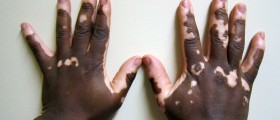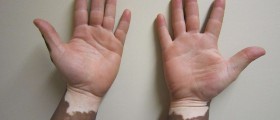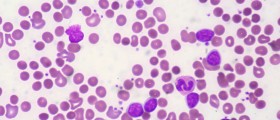
Leukoderma is a skin condition which typically features with spots, marks or white patches. The condition is also known under the name vitiligo. This is not a serious condition and can be easily diagnosed. The major problem regarding leukoderma is aesthetic particularly if characteristic skin changes affect one's face.
Symptoms of Leukoderma
The skin changes characteristic for leukoderma can affect each and every part of the skin. They may vary in size and shape as well as in number. The affected skin is white due to lack of melanocytes, cells responsible for proper skin color. Namely, these cells contain melanin, a pigment which gives the skin specific color and in case of leukoderma the absence of melanocytes is a cause of discoloration.
Initially skin changes are small and they may become bigger or even merge with each other. The disease may affect large portions of skin and lead to additional problems such as embarrassment or even depression.
Causes of Leukoderma
There is no confirmed cause of leukoderma but doctors have suggested several possible factors which may contribute to the disease. The condition affects all the age groups and both genders. In many cases leukoderma is hereditary and it may be also associated with injuries such as burns. There is also a connection between leukoderma and other medical conditions such as certain congenital disorders (partial albinism, tuberous sclerosis, Waardenburg syndrome and piebaldism) and other illnesses (diabetes, thyroid gland disorders, pernicious anemia and Addison's disease).
Furthermore, leukoderma can be connected with several other skin conditions and bacterial/ fungal infections. The condition may also occur due to frequent exposure to chemical depigmentation agents. And finally, leukoderma may be related to certain gastrointestinal conditions, prolonged physical illness, autoimmune disorders and autotoxic responses.
Treatment for Leukoderma
There are several treatment modalities for leukoderma. Topical creams may provide with temporary results. Specific cosmetic products which contain chemicals and dyes may help a person to retain natural color of the skin. Creams with dihydroxyacetone can successfully cover the skin patches.
Repigmentation of the skin can be performed with corticosteroids. Furthermore, there is one more option-PUVA. PUVA is a treatment which includes the drug psoralen and UV-A rays. The drug is taken orally and the affected parts of the skin are treated with UV-A.
In leukoderma depigmentation can provide with unique color of the entire skin by removing the remnant melanocytes from the healthy parts of the skin. This treatment is most commonly performed with benzoquin and mono benzylether. After the treatment patients are advised not to be in a close contact with other people for a while.

















Your thoughts on this
Loading...